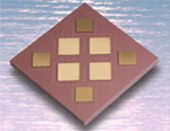 IBM has announced that it is implementing new manufacturing methods that will enable Power6 server processors to run twice as fast as they currently do while still meeting temperature requirements.
IBM has announced that it is implementing new manufacturing methods that will enable Power6 server processors to run twice as fast as they currently do while still meeting temperature requirements.
According to Bernard Meyerson, IBM’s Chief Technical Officer, the company is not only shrinking the size of transistors but also altering the way silicon operates by placing an insulating layer beneath a silicon layer that is about 500 atoms thick.
These improvements allow the Power6, manufactured using 65 nm technology and expected to debut in mid-2007, to achieve clock speeds of up to 4 – 5 GHz. IBM asserts that the Power6 will directly compete with products from rivals such as Intel, AMD, and Sun Microsystems.
When Intel introduced its 90 nm technology in 2003, it was observed to cause more severe energy leakage than previous manufacturing methods, resulting in chips generating heat even when not running at full capacity. One of the remedies has been to integrate two processing cores on a single chip and reduce operating clock speeds to enhance performance and mitigate issues caused by high temperatures. In contrast, the Power6 is designed to operate at unprecedented high clock speeds while still consuming power efficiently.
Currently, Intel is also researching two new manufacturing and design techniques aimed at reducing power consumption on system boards. The first method provides voltage to both the CPU and the cache, while the second method will integrate voltage regulators onto the transistors.


















































